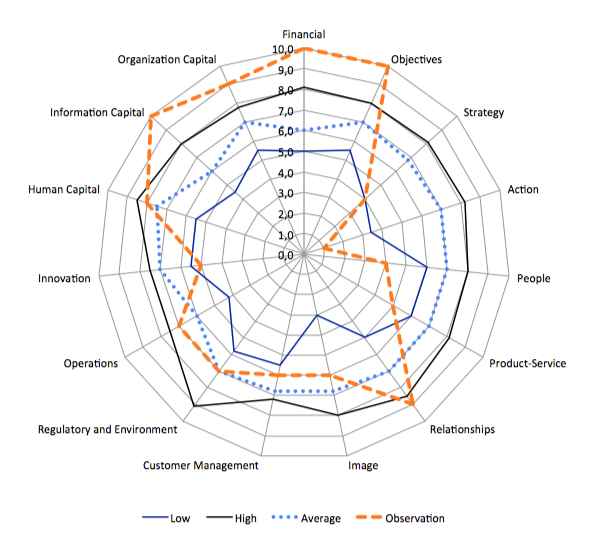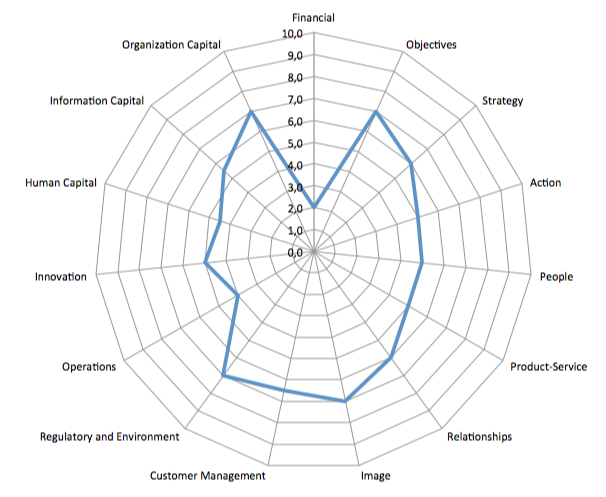Strategy for software Dummies – part 12

Strategy for software Dummies – part 12
The title for this series of posts is inspired by the extensive series of instructional/reference books, which serve as non-intimidating guides for readers new to the various topics covered, or for readers who need a solid brush up. The title doesn’t imply that software CEO’s are Dummies; only that there is a need for a new type of “strategy framework” that produces more than fluff and which can be completed in a very short time.
A recap from post #11.
The ABC company is an Independent Software Vendor (ISV) planning to go global. They have asked a ValuePerform consultant to help them define an international Go-To-Market plan. The ValuePerform consultant wants to know the current position of the ABC company before any work on future strategies commences. So far the management team of the ABC company has been through a number of exercises revealing that each member of the team has very different perceptions of anything from the sources of growth, the nature of the Customer Value Proposition, the market situation and which management areas are important and which are not.
The ValuePerform consultant has facilitated a process where the management team comes to a common understanding of the priorities as well as the importance of 15 critical management areas.
How are we performing?
This post describes how the ABC management team is assessing their own performance on the 15 critical management areas.
Through answering the ValuePerform questionnaire, each member of the management team is now assessing the ABC company’s performance on the 15 critical management areas. The results are illustrated below.

Fig. 1: The individual assessment of how the company and the management team is performing on the 15 critical management areas
Again we see substantial variances in how each member of the management team perceives the situation in each of the 15 management areas.
The thin blue line shows the lowest score, the thin black line the highest score and the dotted blue line the average score.
The ValuePerform software is adding an “observation” line (orange/dotted) to the chart. This line is based on factual information provided by the CEO only. The observation line is a “sanity check” based on the factual information. An observation position outside the Low/High range indicates that the management team may be out of sync with reality. An additional check is required in such situations.
The management team now reviews the performance assessment of each of the 15 management areas. Filtering out differences in semantic interpretations the management team reaches consensus on the following self-assessment:

Fig. 2: Self-assessment of the performance on the 15 critical management areas
The self-assessment is actually NOT following the average from Fig. 1. Filtering out the differences in semantic interpretations as well as the following discussion allows the management team to review the real differences in perceptions and reach a common conclusion.
With the score 10 being “the black-belt” it is obvious that the ABC management team cannot be blamed for having an inflated assessment of their own performance.
The next blog post: Identifying “the low hanging fruit”.
Other posts in this series:
Post #1: Strategy? – oh no, not again!
Post #2: Introducing ValuePerform – a lean approach for strategy analysis and alignment
Post #3: The 6 sources for financial growth
Post #4: Why do management teams disagree?
Post #5: Getting the priorities in place
Post #6: The Customer Value Proposition
Post #7: The Customer Value Proposition TODAY
Post #8: The Customer Value Proposition in the FUTURE
Post #9: The Market Situation
Post #10: ValuePerform and the 15 Management Areas
Post #11: What is important and what is not?
Post #13: Identifying the important and the urgent issues
Post #14: The Action Plan
Post #15: Why does misalignment occur?
Post #16: The price of management misalignment
Post #17: Avoiding invisible or suppressed misalignment
Post#18: The cost/benefit ratio of ensuring alignment








